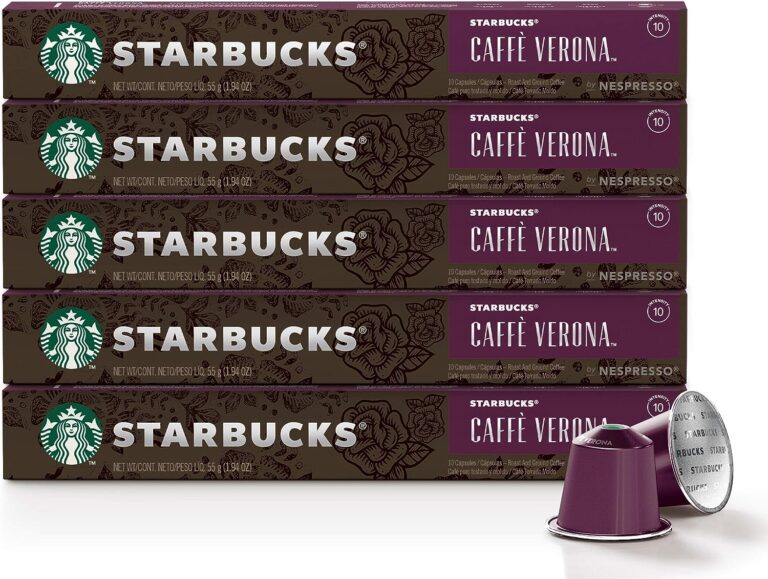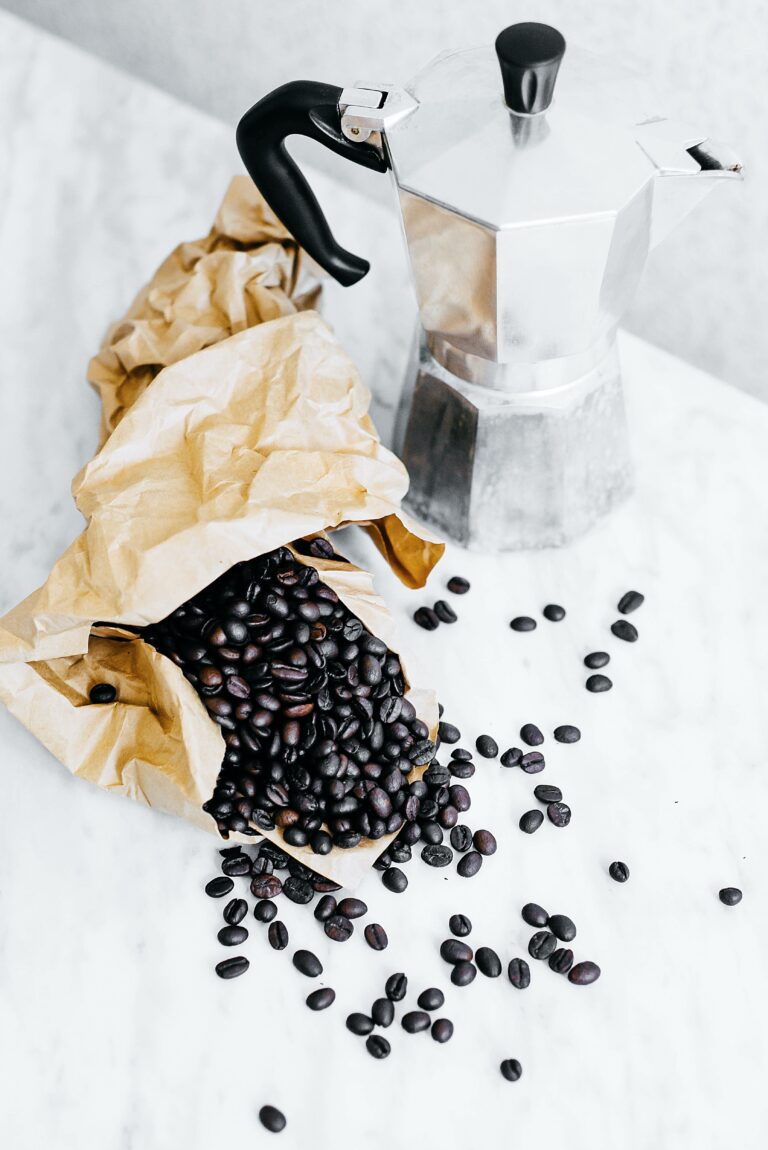Starbucks Decaf Espresso Caffeine: How Strong Is It?
Are you a coffee lover who enjoys the rich and bold flavors of espresso but wants to cut back on caffeine? Then look no further than Starbucks Decaf Espresso Caffeine! This delightful blend allows you to indulge in the robust taste of espresso without the jitters. Specially crafted to retain the distinct flavors of their signature espresso, Starbucks has created a decaffeinated option that doesn’t compromise on taste. So sit back, relax, and savor the moment as you sip on a cup of Starbucks Decaf Espresso Caffeine, a perfect choice for those seeking a delicious, caffeine-free coffee experience.
Understanding Decaf Coffee
Role of Caffeine in Coffee
Caffeine is a natural stimulant found in coffee beans that is responsible for the energy boost and alertness many people experience after consuming coffee. It is a widely consumed psychoactive substance and a key component of traditional coffee. However, not everyone can tolerate caffeine due to its stimulating effects, and some individuals may experience negative side effects such as insomnia, jitters, or increased heart rate. This is where decaf coffee comes into play.
Process of Decaffeination
The process of decaffeination involves removing most of the caffeine from coffee beans while retaining the flavors and aromas that make coffee so enjoyable. There are several methods used to decaffeinate coffee, including the Swiss Water Process, the Direct Process, the Indirect Process, and the Carbon Dioxide Process.
The Swiss Water Process involves soaking the coffee beans in hot water to dissolve the caffeine, then running the water through activated carbon filters to remove the caffeine. The beans are then dried and roasted to create decaf coffee.
The Direct Process utilizes chemicals to extract the caffeine from the coffee beans. The beans are soaked in a solvent such as ethyl acetate or methylene chloride, which binds to the caffeine molecules and separates them from the beans. The solvent is then evaporated, and the beans are dried and roasted.
The Indirect Process is similar to the Direct Process, but instead of soaking the beans in a solvent, they are steamed or soaked in water. The water or steam is then treated with a solvent to extract the caffeine, leaving behind the decaffeinated beans.
The Carbon Dioxide Process involves pressurizing carbon dioxide gas and passing it through the beans. The carbon dioxide acts as a solvent, extracting the caffeine from the beans. Once the caffeine is removed, the carbon dioxide is depressurized and evaporates, leaving behind decaffeinated beans.
Types of Decaf Coffees
There are various types of decaf coffees available, each with its own flavor profiles and characteristics. Some common types include decaf espresso, decaf drip coffee, decaf Americano, and decaf latte. Decaf espresso, in particular, is a popular choice among coffee enthusiasts.
Starbucks and Its Coffee Varieties
Starbucks and Its History
Starbucks is a globally renowned coffee chain that originated in Seattle, Washington in 1971. It has since become a household name, known for its high-quality coffee and cozy ambiance. Starbucks has played a significant role in shaping the coffee culture around the world, introducing innovative brewing techniques and new flavor combinations.
Different Types of Coffees at Starbucks
Starbucks offers a wide range of coffee varieties to cater to diverse tastes and preferences. From traditional favorites like Pike Place Roast and Caffè Misto to unique offerings like Nitro Cold Brew and Blonde Vanilla Latte, there is something for everyone. Whether you prefer a bold and robust coffee or a smooth and mellow brew, Starbucks has options to satisfy every coffee lover.
Innovation in Coffee Making at Starbucks
Starbucks has always prioritized innovation in its coffee making process. From sourcing high-quality coffee beans to implementing state-of-the-art brewing techniques, Starbucks continuously strives to provide an exceptional coffee experience for its customers. Innovation can be seen in their unique brewing methods, such as the Clover brewing system and the use of Nitrogen-infused cold brew, which elevates the taste and texture of their coffee offerings.

This image is property of images.unsplash.com.
Starbucks Decaf Espresso – An Overview
Definition of Starbucks Decaf Espresso
Starbucks Decaf Espresso is a popular beverage choice for those who enjoy the rich and intense flavors of espresso but prefer to avoid the stimulating effects of caffeine. It is made from a blend of decaffeinated coffee beans and is crafted to deliver the same bold and aromatic profile as regular espresso.
Popularity of Decaf Espresso
Decaf espresso has gained significant popularity in recent years as more people are seeking alternatives to regular coffee without sacrificing taste or the coffee shop experience. Starbucks Decaf Espresso serves as a go-to option for coffee enthusiasts who want to enjoy a delicious cup of coffee without the effects of caffeine.
Taste Profile and Characteristics
Starbucks Decaf Espresso offers a distinctive taste profile that mirrors its caffeinated counterpart. It is known for its bold, balanced flavors, velvety mouthfeel, and rich crema. The decaffeination process carefully preserves the complex flavors and nuances of the coffee beans, resulting in a decaf espresso that satisfies the taste buds of even the most discerning coffee connoisseurs.
Decaffeination Process at Starbucks
Underlying Principles of Decaffeination
Starbucks employs rigorous standards and carefully selected methods to ensure the highest quality in the decaffeination process. Their goal is to remove the caffeine while maintaining the flavor integrity of the coffee beans.
Techniques applied for Decaffeination
Starbucks utilizes various decaffeination techniques, including the Swiss Water Process, to remove caffeine from their beans. The Swiss Water Process, known for its natural and chemical-free approach, is a preferred method for decaffeinating coffee at Starbucks. It involves soaking the beans in hot water to extract the caffeine, then using activated carbon filters to remove the caffeine from the water. The beans are then dried and roasted to perfection.
Quality Control in the Decaffeination Process
Starbucks maintains strict quality control measures throughout the decaffeination process to ensure consistency and excellence. Every batch of decaf coffee beans undergoes meticulous analysis and testing to ensure the removal of caffeine while preserving the optimal flavors and aromas that Starbucks is known for.

This image is property of images.unsplash.com.
Caffeine Content in Starbucks Decaf Espresso
Amount of Caffeine in Decaf Espresso
Starbucks Decaf Espresso is specifically crafted to contain only trace amounts of caffeine. On average, an 8-ounce cup of Starbucks Decaf Espresso contains approximately 3-15 milligrams of caffeine, making it an excellent choice for individuals who are sensitive to caffeine or prefer to limit their intake.
Comparison of Caffeine Levels with Other Drinks
When compared to other caffeinated beverages, Starbucks Decaf Espresso has significantly lower caffeine content. For instance, an 8-ounce cup of regular coffee typically contains around 95 milligrams of caffeine, while the same amount of black tea contains approximately 47 milligrams. This makes Starbucks Decaf Espresso a suitable option for individuals who enjoy coffee flavors but want to minimize their caffeine intake.
Factors Influencing the Caffeine Content in Decaf Espresso
The caffeine content in decaf espresso can vary based on several factors, including the type of decaffeination process used, the specific coffee beans used, and the brewing techniques employed. However, Starbucks ensures that their decaf espresso consistently meets their standards for taste and caffeine content.
Health Benefits of Starbucks Decaf Espresso
Health Implications of Reduced Caffeine
One of the primary health benefits of Starbucks Decaf Espresso is the reduction in caffeine intake. For individuals who are sensitive to caffeine or have health conditions that require limited caffeine consumption, decaf espresso provides an excellent alternative to regular coffee. Reduced caffeine intake may contribute to improved sleep quality, reduced anxiety and jitteriness, and a decreased risk of caffeine-related side effects.
Nutritional Aspects of Decaf Espresso
Starbucks Decaf Espresso offers a rich array of flavor without significant caloric content. It is a low-calorie beverage when consumed without additional sweeteners or flavorings. Additionally, decaf espresso contains essential nutrients such as antioxidants, potassium, and magnesium that are naturally present in coffee beans.
Scientific Research on Decaf Coffee Health Benefits
Studies have shown that consuming decaf coffee, including decaf espresso, can have several health benefits. Decaf coffee has been associated with a reduced risk of chronic diseases such as type 2 diabetes, liver disease, and certain types of cancer.

This image is property of images.unsplash.com.






